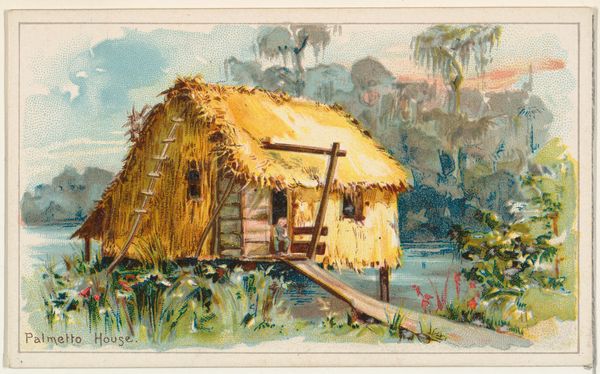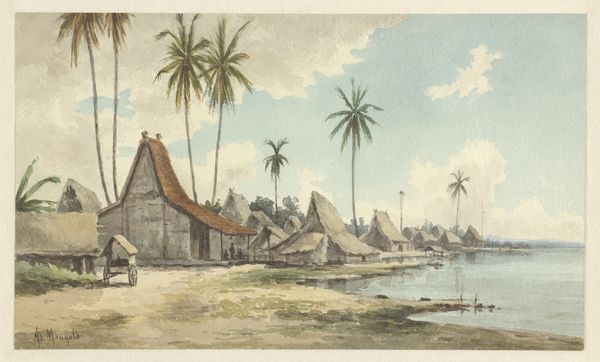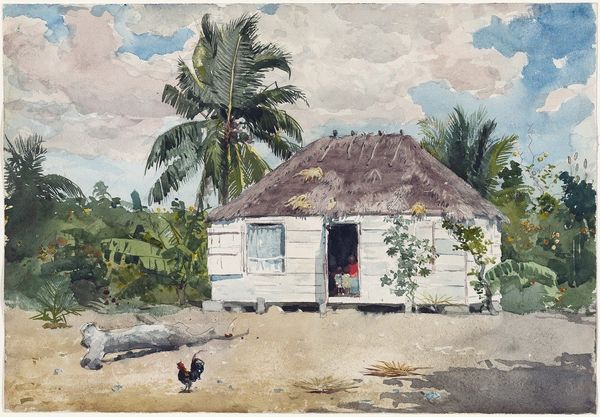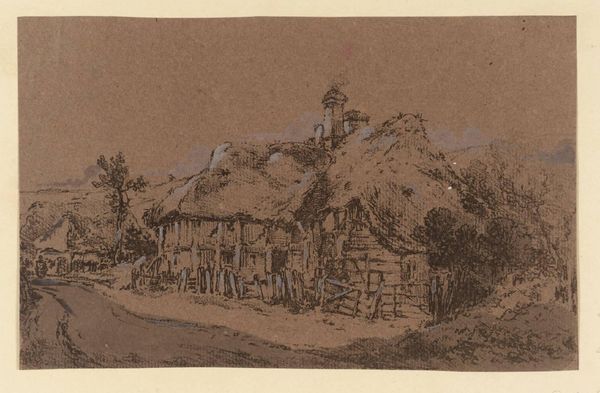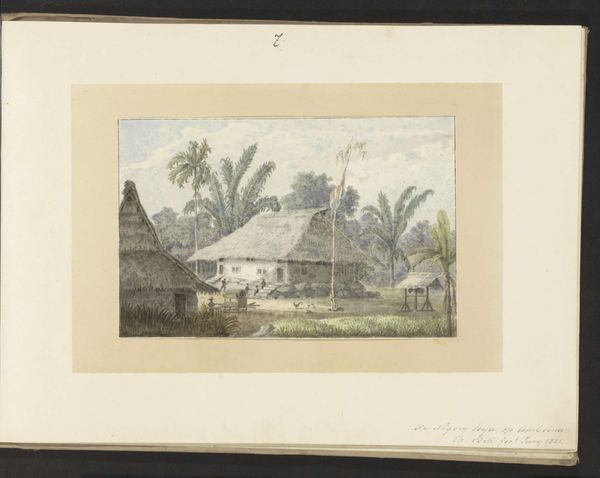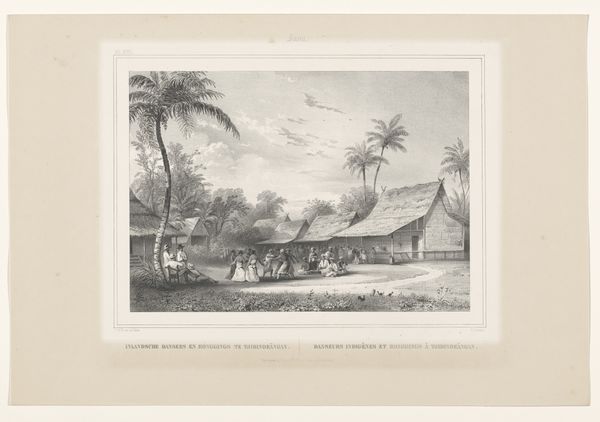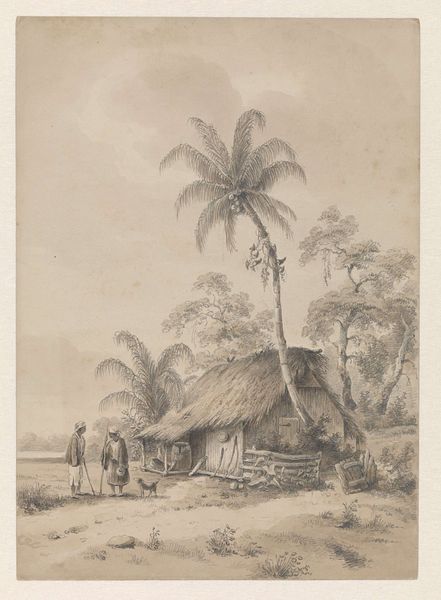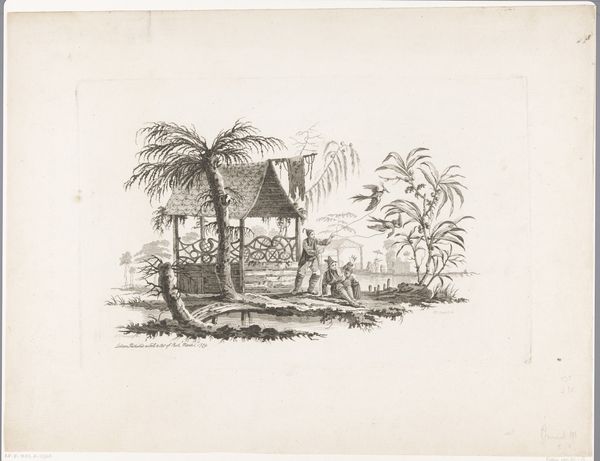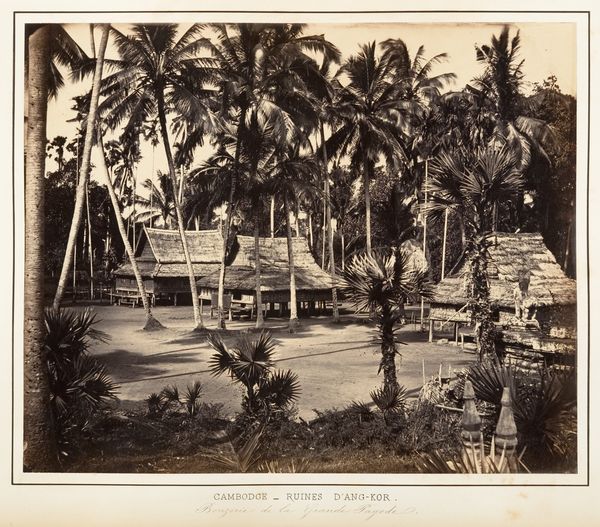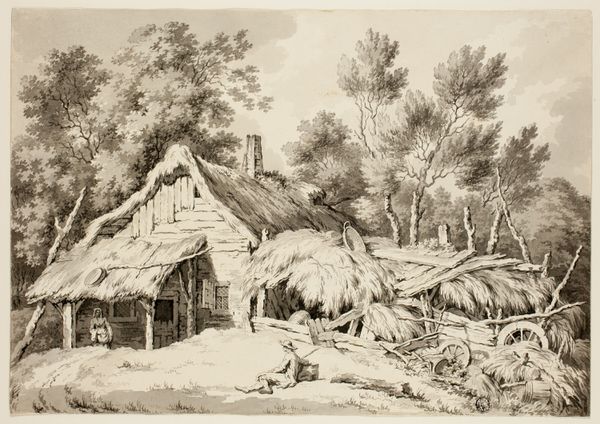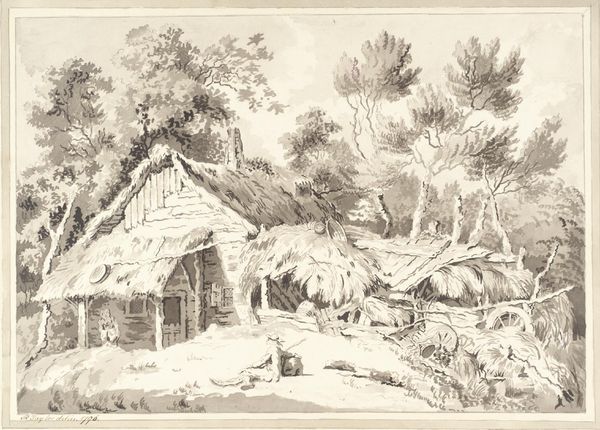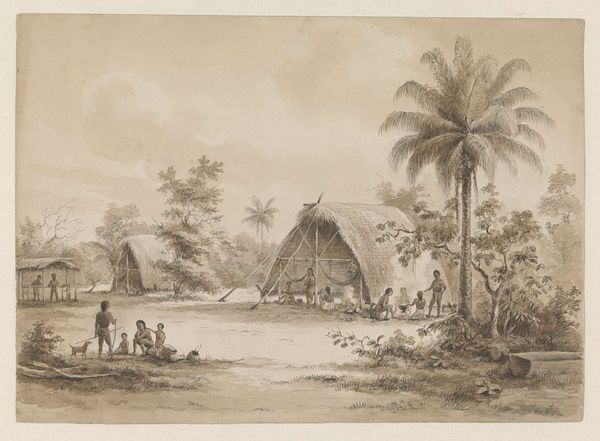
Samoan Homestead, from the Habitations of Man series (N113) issued by W. Duke, Sons & Co. to promote Honest Long Cut Smoking and Chewing Tobacco 1890
0:00
0:00
lithograph, print
#
lithograph
# print
#
landscape
#
coloured pencil
#
coffee painting
Dimensions: Sheet: 2 1/2 × 4 1/8 in. (6.4 × 10.5 cm)
Copyright: Public Domain
Curator: Before us, we have "Samoan Homestead," a collotype and colored-pencil lithograph produced around 1890 by The Giles Company. It was originally issued by W. Duke, Sons & Co. as part of their 'Habitations of Man' series to promote tobacco. Editor: It has such a wonderfully idealized, almost quaint feel to it. The composition, the way the homestead is centered, is visually appealing and comforting. It speaks of an innocent paradise somehow untouched by the burgeoning, disruptive forces of late-19th-century industrialisation. Curator: Precisely! These trade cards were immensely popular, fueled by an idealized image of non-Western cultures, particularly across the Pacific. Consider how this representation would’ve reinforced prevailing cultural narratives and beliefs about race, civilization, and progress among those in America. Editor: The artist's emphasis on depicting the thatched roof with such pronounced, sweeping strokes suggests a kind of hyper-reality. It is as if the maker is striving for an amplified aesthetic impact. Do you find the roof details also work as a signifier, hinting towards an authenticity rooted in Samoan tradition, whilst somewhat betraying it? Curator: I see your point. In terms of its semiotics, the image plays into existing romantic perceptions about Polynesia: untouched nature, a gentle people. This all links into the period’s ideas surrounding the exotic, especially when you factor in this piece was primarily a marketing tool—selling dreams, not simply tobacco. Editor: Exactly. The overall effect—that high horizon line and tightly framed homestead—creates a slightly claustrophobic picture of enforced idyll. Curator: The lithograph, beyond its commercial purpose, serves as a reflection of its time. It prompts reflection on the complexities of cultural representation. It also shows how deeply intertwined consumer culture and prevailing ideologies can be. Editor: Ultimately, engaging with such artworks pushes us to rethink representation, forcing us to critically re-examine these supposedly straightforward, uncomplicated scenes.
Comments
No comments
Be the first to comment and join the conversation on the ultimate creative platform.
